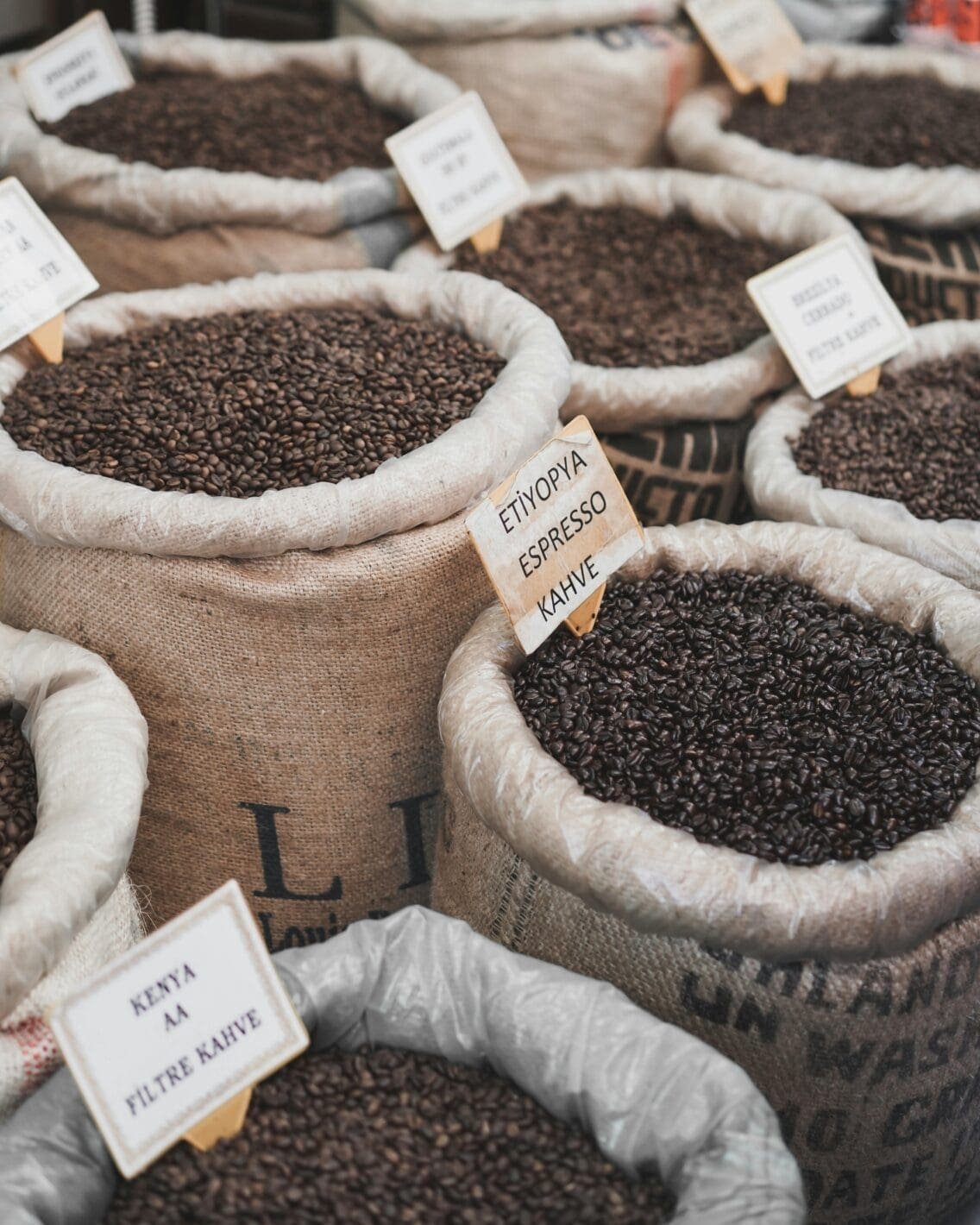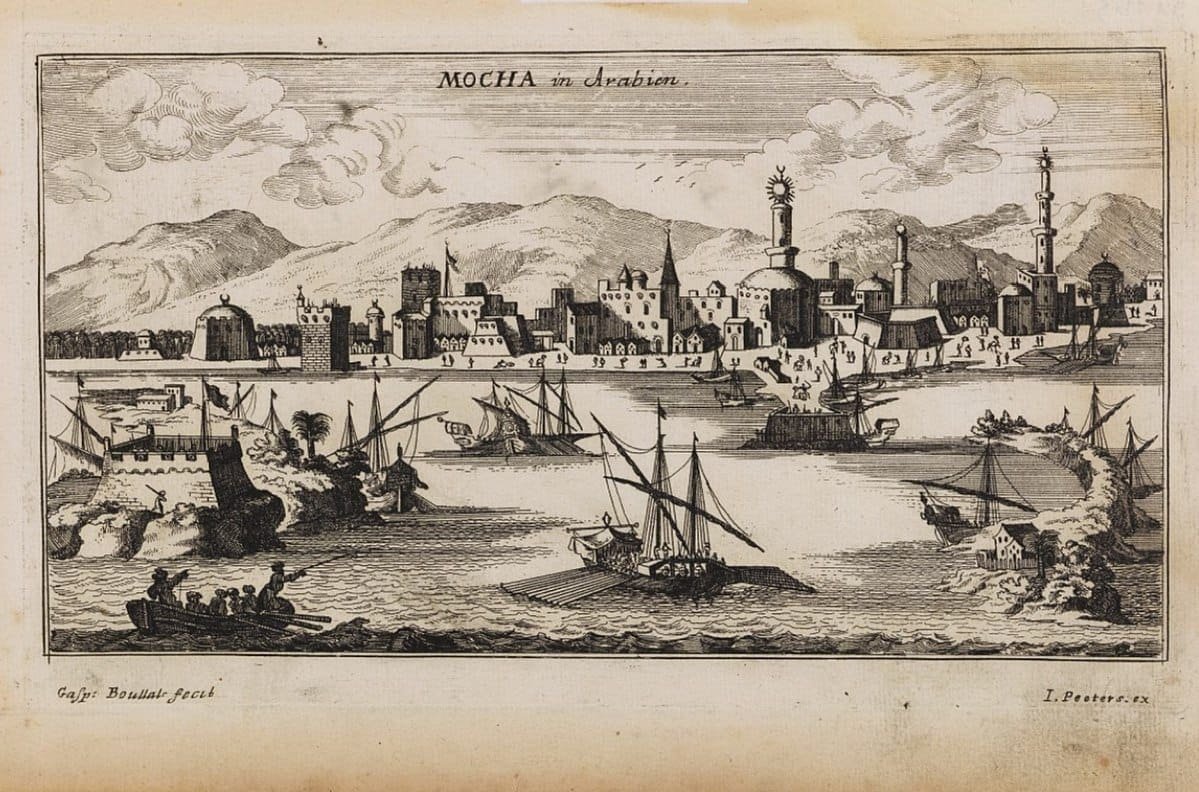Coffee History: From Ethiopia to Global Trade Empire

Whether you savor its aroma on a slow morning or rely on it to fuel you on a busy day, coffee has become an integral part of daily life around the world. But few people realize the humble beginnings of this now-global obsession. The story of coffee history and its place in international trade begins in the highlands of Ethiopia.
This single plant has fueled empires, inspired uprisings, and brewed connections between strangers for centuries.
Every cup holds a legacy far bigger than it looks.
In this article, we’ll trace coffee’s path from ancient legends to modern capitalism. From its mystical roots to its role in colonialism, from Ottoman coffeehouses to hipster cafés, this is the story of how one bean shaped the world.
Let’s start at the very beginning, where dancing goats first hinted at the power of the brew.
The Origins Story: Coffee and Its Ethiopian Roots
The most popular origin story of coffee begins with a curious goat herder named Kaldi.
Living in the Ethiopian highlands centuries ago, Kaldi noticed his goats became unusually energetic after eating red berries from a certain tree. Intrigued, he tried the berries himself and brought the fruit to monks at a nearby monastery.

They then used the beans to stay awake during long prayers, and so the legend of coffee began.
But while the Kaldi tale is charming, the real roots are a bit more grounded.
The Oromo people of Ethiopia were likely the first to use coffee as early as the 10th century AD. They didn’t brew it like we do today, but instead mixed it with fat to create small balls that they could chew into to fend off tiredness.
Today, coffee remains a vital aspect of Ethiopians’ daily life.
Over 7 million smallholder farmers cultivate more than 90% of the country’s coffee, making it a major source of livelihood. Ethiopia exports about half of its coffee—accounting for 30% of the nation’s total exports—while the rest is consumed locally, reflecting its deep cultural significance.
Apart from its economic impact, it also plays a huge role in their culture and society. Ceremonies and rituals are built around coffee to get families and communities closer together.

Coffee didn’t stay put for long inside Ethiopia, though.
Through bustling trade routes across the Red Sea, the bean made its way to Yemen, setting the stage for its first true cultivation and religious use beyond Ethiopia’s borders.
Coffee History and Its Spread Across the Islamic World
Somali merchants from the ports of Berbera and Zeila were the first to export coffee from Ethiopia to Yemen, sourcing the beans from Harar and the Abyssinian interior.
By the 15th century, Sufi monks in Yemen’s port city of Mocha began brewing coffee to help them stay alert during overnight prayers and as some sort of spiritual intoxication for when they chanted the name of God.

Coffee quickly spread through the Islamic world, from Cairo to Istanbul. Coffeehouses, or qahveh khaneh, began appearing across cities.
Since most practicing Muslims avoided liquor and bars, people turned to coffeehouses as lively spaces to gather, socialize, and exchange ideas. The drink’s low cost and inclusive nature broke down long-standing social barriers.

Of course, not everyone approved.
Some religious leaders feared coffee would disrupt moral order, likening it to intoxicants. In places like Mecca and Constantinople, authorities even banned it briefly. But the bans never stuck for long.
The demand was too high, and the culture around coffee too deeply embedded. By the 16th century, coffee had fully taken hold in the Muslim world. At one point, the Ottoman Empire even established a monopoly on the trade of coffee.
The European Craze: Coffeehouses, Politics & Power
When coffee first arrived in Venice in the early 1600s, it was treated with suspicion.
Some called it “the bitter invention of Satan.” But after Pope Clement VIII tried it himself, he gave the consumption of the drink approval, and coffee’s fate in Europe was sealed. Upon tasting coffee, Pope Clement VIII declared:
Why, this Satan’s drink is so delicious that it would be a pity to let the infidels have exclusive use of it.
It quickly spread to cities like Paris, London, and Vienna. The British monarchy didn’t welcome coffee with open arms, though.
With the opening of the first coffee house in London in 1652, people from different social classes were able to gather and discuss news. Soon, coffeehouses became hotbeds of political debate, worrying King Charles II, who feared they threatened royal authority.
Despite efforts to shut them down, including a brief ban (just 11 days!), public demand for coffee and free expression prevailed.
The failed coffeehouse ban ultimately fueled history’s progress, as the open discussions Charles II feared helped ignite Enlightenment thinking.
In Oxford, people began calling coffeehouses “penny universities” because one cup granted access to sharp, sober intellectual debate. These spaces became hubs for exchanging revolutionary ideas.

Meanwhile, demand for the drink skyrocketed across the continent. In Austria, coffeehouse culture became a proud part of national identity. It was a Viennese coffeehouse that popularized the custom of adding milk and sugar to coffee.

Coffee transformed from a curiosity into a cultural phenomenon. One can argue that the age of Enlightenment and other revolutionary events were, in many ways, powered by coffee.
Colonialism and the Global Coffee Trade
Europe’s love of coffee soon turned into something darker.
To keep up with demand, colonial powers began cultivating coffee in their overseas territories. The Dutch brought it to Java (an island in Indonesia), the French to the Caribbean, and the Portuguese to Brazil. Coffee plants were smuggled, stolen, and transplanted—all in the name of profit.

Colonial coffee plantations relied heavily on enslaved labor. In Haiti, Brazil, and other colonies, people were forced to work in brutal conditions to meet Europe’s appetite.
The bean that once symbolized spiritual clarity became a tool of exploitation and empire-building.
By the 18th century, coffee was one of the world’s most valuable commodities, alongside sugar and tobacco. It fueled entire economies. Trade routes shifted, fortunes were made, and the bean continued to conquer the globe.
Yet despite its dark turn, coffee continued to bind people together across cultures—even as it divided them by class and labor.
Coffee in the Modern World: What’s a Cup Worth?
Today, coffee is everywhere. And, oh, what an understatement that is.
From instant Nescafé to third-wave roasters, from corner bistros to international chains like Starbucks, it’s nearly impossible to escape its reach.
With industrialization, the 20th century saw the commercialization of instant coffee, making it a pantry staple. Later came espresso machines, café culture, and drive-thru lattes.

The 21st century brought the third-wave coffee movement—a push toward artisanal brewing, sustainable sourcing, and greater transparency in trade. People wanted to know where their beans came from and who picked them. “Farm-to-cup” became more than a slogan; it became a mission.

In many developing countries, coffee remains an economic lifeline. Ethiopia, Brazil, Colombia, and Vietnam rely on coffee exports to support millions of livelihoods. But volatility in prices, climate change, and exploitation remain challenges.
Coffee now wears many hats.
It’s a comfort, a ritual, a status symbol, and a billion-dollar industry.
It’s a daily habit, but also an art form.
So, the next time you have your drink, remember the long and complicated history that coffee has gone through before it filled your cup.
SOURCES:
https://www.britannica.com/topic/history-of-coffee
https://courier.unesco.org/en/articles/ethiopia-home-coffee
https://perfectdailygrind.com/2020/02/ethiopia-to-the-world-the-origins-of-coffee-in-africa/


